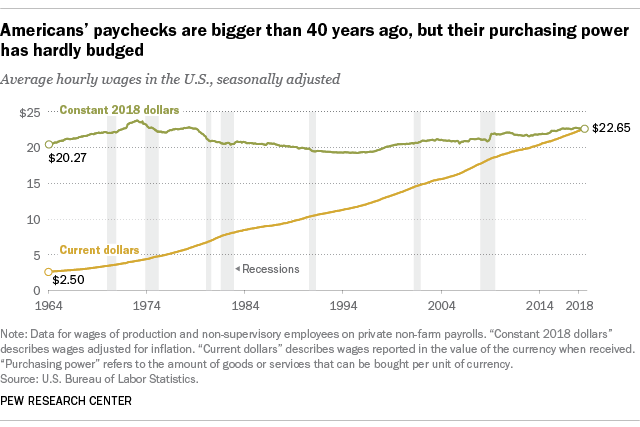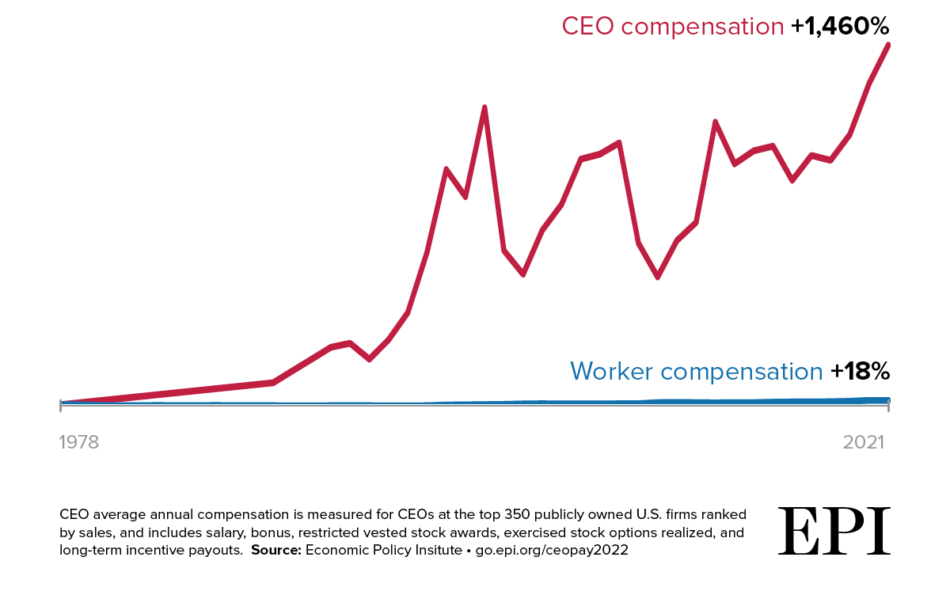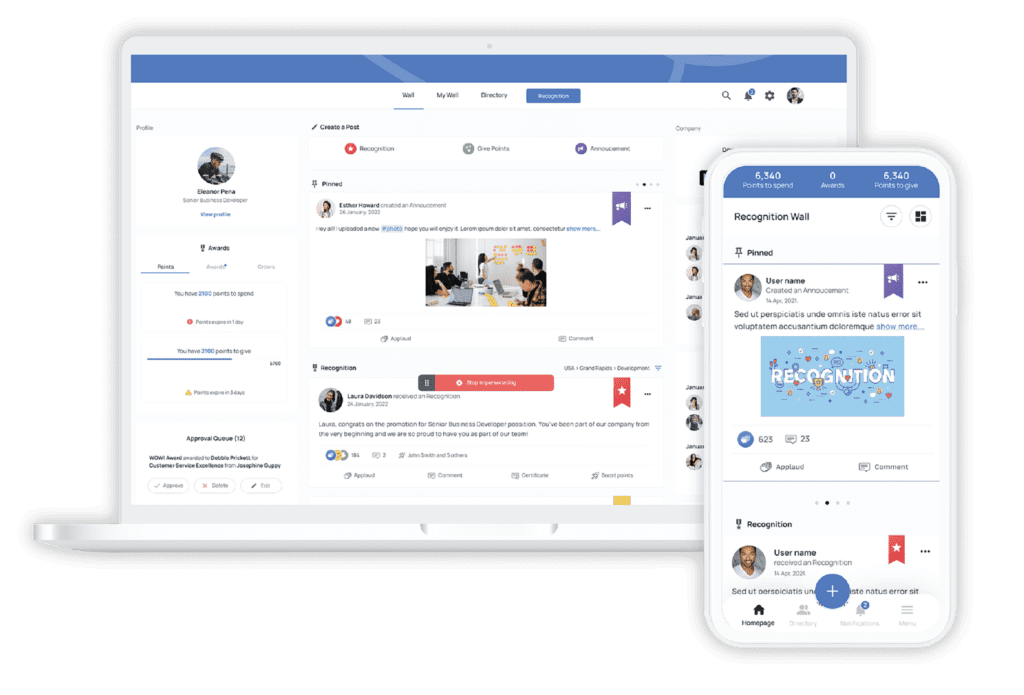January 16, 2024


On October 30, 2023, the United Auto Workers (UAW) called off their 6-week-long strike marking a momentous occasion for workers everywhere.
While the auto workers may have been fighting for specific conditions and benefits lost during the 2007-2008 financial crisis, there are still valuable lessons every company can take away from this experience.
Here, we’ll take a deeper look at what happened with the UAW, how it was resolved, and what it means for employee engagement as a whole going forward.
Key Players
First, let’s establish the key players involved in the strike.
Employers: Ford Motor Company, General Motors (GM), and Stellantis, often referred to as the "Big Three.” Combined, these three automakers' factories employ about 145,000 UAW members and produce about half of the vehicles manufactured annually in the US, accounting for 1.5% of the US GDP.
UAW: The UAW is a labor union that represents the automobile workers employed at Ford Motor Company, General Motors, and Stellantis.
Shawn Fain: UAW President.
Brewing Discontent
In 2008, the automotive industry felt critical impacts from the global financial crisis. So much so, that the combination of the recession and financial crisis pushed the American auto industry to the brink of collapse.
The automotive industry was particularly weakened by an increase in the prices of automotive fuels, which discouraged purchases of SUVs and pickup trucks due to their low fuel economy. The popularity and relatively high-profit margins of these vehicles had encouraged the Big Three to make them their primary focus. However, with fewer fuel-efficient models to offer to consumers, sales began to slide.
Additionally, access to credit for car loans dried up and auto sales plunged 40%. Auto manufacturers and suppliers dramatically curtailed production. In the year before President Obama took office, the industry shed over 400,000 jobs.
During this time, people who kept their jobs at the Big Three agreed to certain concessions to help keep companies afloat.
The key concessions and agreements made by autoworkers during this period included:
Wage Freezes and Cuts: Workers agreed to wage freezes and, in some cases, wage cuts to help the struggling automakers reduce costs.
Healthcare Benefits: There were changes to healthcare benefits, including higher co-pays and deductibles, to ease the financial burden on the companies.
Pension Plans: Changes were made to pension plans, with some adjustments and reductions in benefits to address the financial challenges faced by the companies.
Job Security: The UAW agreed to measures to enhance job security, including provisions that allowed the companies to implement more flexible work arrangements.
Restructuring Plans: In the case of Chrysler and GM, the UAW agreed to support restructuring plans that involved significant layoffs, plant closures, and other cost-cutting measures.
No Strikes Clause: As part of the negotiations, the UAW agreed not to strike during a specified period to provide stability and avoid further disruptions to the struggling industry.


These concessions were part of broader efforts to secure federal assistance for the automakers, which eventually led to government bailouts for GM and Chrysler in 2008 and 2009. The concessions were crucial in helping the companies survive the economic downturn and avoid bankruptcy.
However, while these measures helped stabilize the automotive industry temporarily, they also had significant implications for autoworkers and their livelihoods.
Post-Recession
While the government bailout helped General Motors and Chrysler avoid complete collapse, the landscape of the American auto industry was permanently altered.
The industry faced a period of restructuring, with bankruptcies, plant closures, and substantial changes to business models. Additionally, the concessions made by auto workers during the 2008 financial crisis were significant and, in many cases, not fully reversed.
Wage and Benefit Adjustments: Some wage freezes and benefit adjustments were maintained even after the industry stabilized. The UAW negotiated new contracts that, in some cases, included different compensation structures and benefits compared to pre-crisis levels.
Pension Changes: The restructuring also led to changes in pension plans, and some adjustments remained in effect.
Competitive Pressures: The global auto industry became more competitive, and the pressure to keep costs in check persisted. As a result, the UAW continued to face challenges in fully restoring the pre-crisis levels of compensation and benefits.
While there might have been some improvements in certain areas, the overall recovery did not necessarily result in a complete restoration of all the concessions made during the 2008 crisis. This became the catalyst for the 2023 strike.


Today’s Climate
In March of 2023, Shawn Fain, the newly elected president of the UAW, announced that workers had a growing discontentment with the existing situation. He pledged to engage in negotiations to bring about changes to workers' contracts.
Fain advocated for adjustments in the cost of living to counter inflation, especially as the current contracts were set to expire on September 14. He also sought wage increases that had been lost during the 2007–2008 financial crisis.
Fain expressed the members' desire to eliminate a two-tier wage system, where newer employees received considerably lower pay than their more experienced counterparts, and called for the construction of domestic plants.
Continuing his stance, Fain has criticized the Big Three CEOs’ pay. GM's CEO, Mary Barra, earned about $29 million in 2022, according to Bloomberg. Ford's top person Jim Farley earned just over $20 million in 2022. And Stellantis’s CEO, Carlos Tavares’s salary was $24.8 million in 2022, according to the Detroit Free Press.
Fain also conveyed his disappointment in April at the idling of the Belvidere Assembly Plant in Belvidere, Illinois, during an appearance at the Automotive Press Association. He criticized wage decreases faced by workers in joint venture battery factories compared to those in older facilities.
As of May 2023, the threat of a potential strike hung over the contract talks. During an online appearance in June, Fain reiterated his objectives and criticized automobile manufacturers for boosting profits without a corresponding increase in wages.
Fain maintained the option of a strike throughout the lead-up to the contract negotiations, which started on July 14. Throughout the negotiations, Fain kept members updated online, even symbolically discarding one automaker's proposal on camera.
On August 15, Fain announced a strike vote, which overwhelmingly passed on August 27, with 97% voting in favor.


The UAW’s demands included:
- An immediate 20% raise
- Yearly incremental increases totaling a 46% hourly pay raise
- The reinstatement of traditional pension payment plans and retiree healthcare
- A four-day workweek
- Job protections
- A smooth transition to electric vehicles
Fain acknowledged that these demands were bold but argued their justification, emphasizing the need to reverse post-2007 wage cuts.
During the strike, Fain made public announcements on social media criticizing the discrepancy between profits and wages.
“They admitted that Kentucky Truck generates $25 billion in revenue a year – that’s $48,000 a minute,” Fain said. “Our labor at Kentucky Truck generates more revenue [for the company] each minute than thousands of our members make in a year.”
Ford then rebutted, “Kentucky Truck Plant’s hourly employees earn an average income – including base wages, bonuses, and profit sharing – of $78,000 per year. Under Ford’s latest offer, it would raise to $95,000.”
“While Kentucky Truck Plant generates outsized revenue and profit,” Ford continued, “it also helps support many less profitable plants and supports Ford being in a position to offer a full lineup of vehicles and maintain its position as the largest employer of UAW autoworkers.”
Auto industry analysts then commented that while profits were high for Ford, they’re likely an anomaly due to market changes, and can’t be relied upon for the future. However, they’ve also stated that workers deserve their fair share.
Biden Makes History, Shows Support for Strikers and Union
President Joe Biden made history when he joined a picket line in Wayne County, Michigan in a show of loyalty to autoworkers. Biden is actually the first sitting president to appear on a picket line.
Biden told the striking auto workers, "You deserve what you earned, and you've earned a hell of a lot more than you're getting paid now."
When asked, Biden said he endorsed the union’s demand for a 40% wage increase over four years.
Additionally, Biden said during a meeting with his HBCU advisory board, “I think the UAW gave up an incredible amount back when the automobile industry was going under. They gave everything, from their pensions on. And they saved the automobile industry. And I think that now that the industry is roaring back, they should participate in the benefit of that."
2023 UAW Contract Agreements
October of 2023 marked the end of striking as tentative agreements were reached with Ford, GM, and Stellantis. While the details of each agreement aren’t publicly released, there are a few points we do know.
Ford:
- Wage Increases: 25% overall over four and a half years, including an immediate 11% increase and 3% annual raises in 2024-26 with a final 5% bump in 2027. Top wages will reach over $40 an hour.
- Cost-of-Living Adjustments (COLAs): Restored for the first time in a decade, providing additional wage increases based on inflation.
- Two-Tier Wage System: Eliminated at two key plants, transitioning new hires to top wages faster.
- Signing Bonus: $7,000 for current union members and $6,000 for new hires.
- Job Security: Commitments to new investments in US plants and increased production.
General Motors:
- Wage Increases: 27% compounded over four years, including an immediate 8% raise and 3% annual increases in 2024-26. Top wages will reach over $36 an hour.
- COLAs: Also restored with additional wage adjustments based on inflation.
- Healthcare: Enhanced benefits, including lower deductibles and prescription drug costs.
- Sign-on Bonus: $5,000 for current union members and $2,500 for new hires.
- Job Security: Similar commitments to new investments and increased production.
Stellantis (Chrysler, Dodge, Jeep, Ram):
- Wage Increases: 23% overall over four years, with an immediate 7% raise and 3% annual increases in 2024-26. Top wages will reach over $36 an hour.
- COLAs: Restored with additional wage adjustments based on inflation.
- Signing Bonus: $5,000 for current union members and $1,500 for new hires.
- Job Security: Commitments to new investments and increased production, including specific plans for Jeep factories.
Overall, the new contracts represent significant gains for autoworkers, including substantial wage increases, restored COLAs, improved benefits, and job security commitments. However, each contract has its own nuances and variations, so it's important to check the specific details for each automaker when looking for more information.


What Can We Learn
While all of this may have played out within the auto industry, it’s in many ways representative of what’s happening in a range of industries across the country.
Studies have found that employees were unhappier in 2023 than they were during the height of the pandemic in 2020. Undeniably, the pandemic was one of, if not the most, stressful times in many of our lives. From job insecurity to the loss of loved ones to a persistent state of anxiety, 2020 was a difficult year, to say the least.
So why are employees even less happy now?
As with most things, there’s not a black-and-white answer, but rather a culmination of many aspects. But the good news is, we as leaders are able to make changes that can change this sentiment. Let’s dive into what they are and what can be done to change them.
Pay Employees Well
According to a Gallup study, one of the biggest causes of job dissatisfaction is pay – or lack thereof.
Pay has become a hot-button issue lately for good reason. We’ve all heard of the cost-of-living crisis and it continues to impact many of us. So much so, according to the US Department of Agriculture, grocery prices surged by 11.4% last year, the highest increase since the 1980s. Before 2020, such a significant rise hadn't occurred since 2014 when prices increased by 3.7%.
Furthermore, consumers paid 14.3% more for electricity last year compared to 2021, more than double the overall 6.5% price increase, as reported by the US Bureau of Labor Statistics.


On the flip side, U.S. companies budgeted for an average salary increase of 3.4% in 2022 - less than half of the prevailing inflation rate at that time, standing at 7.9%. A subsequent survey reported an increase in the average salary raise to 4.2%, but it still lagged behind the 2022 U.S. inflation rate of 6.4%.
To compound the issue, many employees are more aware than ever of the pay inequity between executives and employees. In the 1970s, CEOs made roughly 20 to 30 times their employees. In 2021, CEOs made about 400 times their workers.


This has become a recipe for discontent and frustration among workers. And unfortunately, oftentimes the solution is to switch jobs.
A 2019 study by ADP found that, in general, when an employee stays at their current job, they’ll get a 4% pay increase. However, when they switch jobs, they’ll likely receive a 5.3% salary bump. Another study found that nearly half of people who switched jobs during the pandemic received a staggering 10% or more pay increase.
What to Do:
With such numbers, it’s hard to blame people for job hopping. However, this is a preventable issue for many companies. Paying employees well, while providing opportunities for regular raises can be enough to prevent growing discontent.
Leaders should take the opportunity to prevent voluntary turnover by proactively addressing salary negotiations. While this may be genuinely difficult for some companies to support, for others it may be more of a matter of priority, as it’s estimated that the cost of replacing an employee can range from one-half to two times the employee's annual salary.
Professional Growth and Development
WorkStep surveyed over 18,000 hourly workers across 150 companies and found that lack of career growth was the top reason for turnover. In truth, this finding should be fairly unsurprising.
Most employees desire some kind of growth and development in their careers, and companies that invest in their employees in this way tend to see better retention.
Furthermore, the ability to develop skills is a fundamental component of employee engagement. Companies with a culture of growth tend to attract and retain high-performing employees who develop stronger relationships with the company.
This can be especially true among younger employees. LinkedIn reports 40% of young workers would take a 5% pay cut for career growth, and 76% of Gen Zers seek more advancement opportunities. Additionally, 76% of Gen Zers want more opportunities to move up or increase responsibilities at work.
What to Do:
First, it’s important to have open lines of communication with your employees, whether that’s through regular one-on-one meetings or through pulse surveys.
Utilize these lines of communication to dig deeper into your employees’ career goals and begin to
align employees' career aspirations, passions, and strengths with their roles. Conduct one-on-one sessions to identify strengths and passions. Online self-assessment tools can help in this process too.
You can also use these tools to gauge who on your team is interested in upskilling or filling an open role in another department.
Employee development opportunities may include:
- Career development conferences
- Online classes or higher education
- Taking on more responsibilities and challenges
These activities can:
- Enhance an employee's performance in his or her current role
- Spark curiosity or bring out a new talent
- Present the opportunity to learn about other roles within the company's industry


Support Mental Health and Wellness
Another top complaint employees have is unreasonable workloads with a lack of support from colleagues and supervisors. This inevitably creates stress and can negatively impact employees’ overall well-being.
In fact, employees around the world are more stressed now than ever before, according to Gallup. The report also found that employees are also experiencing a staggering level of dissatisfaction, disengagement, and unhappiness. So much so, that nearly 80% of employees reported feeling either emotionally detached or miserable at work.
While there are many factors that impact employee disengagement and dissatisfaction, one critical aspect is how well managers support their employees’ workloads, well-being, and needs.
“The role of the manager is really important in wellbeing,” according to Jim Harter, chief scientist of workplace management and wellbeing at Gallup.
“…People know what their role is, they get recognized when they do good work, they feel cared about at work and have a chance to develop in the future, they can see where they’re headed in the organization. If you can get those sorts of things right, you start building trust. And when you have trust, you can open the door for having broader discussions around wellbeing.”
What to Do:
Promoting well-being isn't just about talking the talk; leaders must also walk the walk. When bosses consistently skip vacations, family gatherings, and self-care, it sends a message to the team that they should follow suit.
While encouraging the utilization of paid time off and expanding its availability is crucial (Indeed discovered that 36% of workers believe increased PTO could alleviate burnout), relying solely on PTO won't solve issues in a toxic work culture.
A thriving organization doesn't push individuals to the brink, necessitating time off for recovery. Since company culture is established from the top, leaders should maintain a healthy work-life equilibrium and motivate their teams to do the same.
Remind employees to disconnect after the workday and refrain from sending emails outside business hours. Also, be cautious about praise and promotions, as they convey expectations.
Additionally, consider incorporating mental health days, initiating employee wellness programs, and providing free counseling through an Employee Assistance Program. Expressing a dedication to mental well-being is crucial, but tangible actions must align with your words.


Create a Recognition Culture
Effective recognition is linked to higher retention, morale, and engagement. Forbes research shows that the top 20% recognition culture companies have 31% lower turnover. Yet, only one in three employees were recognized in the last week according to Gallup.
Busy schedules often prevent meaningful recognition, leaving employees undervalued. This common practice is costly. Companies with effective recognition programs have 31% lower voluntary turnover and 63% of employees who feel recognized are unlikely to look for a new job.
Furthermore, when employees believe they’ll be recognized for their work, they’re nearly 3 times more likely to be highly engaged and the single most important driver for employees to do “great work” is employee recognition.
Consider an online employee recognition platform like Terryberry's Be Recognized. It enables real-time employee recognition through a social feed and empowers peer-to-peer appreciation, reinvigorating employees' sense of purpose within the organization.
Be Recognized allows employees to write on each other's walls (either privately or publicly), comment, react, and send points that are redeemable for merchandise, experiences, and charitable giving.
Terryberry's platform also offers tailorable recognition platform and reward solutions - from service and milestone awards to sales and safety incentives - all in one place. It’s your software hub for everything you need to design and develop a recognition culture within your organization.


Next Steps
Creating a work culture that celebrates employees isn’t a quick fix and it can’t happen overnight, but the efforts are worth the cost. Through fairly straightforward initiatives, leaders can build a culture that reduces employee turnover, boosts engagement, and most importantly, treats employees like people.
The Terryberry Be Engaged Platform offers a comprehensive solution that can host your employee engagement efforts, including milestone and service awards, peer-to-peer social recognition, feedback and communication, and performance and incentive rewards.
- Pulse Survey Software: Be Heard is an employee survey solution that's designed to enhance your employee experience while fueling business performance.
- Service Awards and Performance Awards: Recognize and reward employees based on years of service awards, anniversaries, or performance.
- Social Recognition: Empower your employees and managers to recognize their peers and celebrate successes with an easy-to-use social recognition application.
- Feedback and Communication: Unlock improved feedback and communications with employee and customer feedback solutions.
- Wellness Programs: We make it easy to run wellness programs and activity challenges that increase engagement, expand corporate health, and build team camaraderie.
Contact Us
Ready to learn more? Schedule a demo with our team to get a hands-on walkthrough of how Terryberry can transform the culture of your workplace.
FAQ
25%, however the 4-year and 8-month agreements also restore cost-of-living allowances that boost total compensation by 33%.


